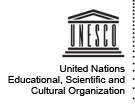Strengthening Cumanayagua Radio to foster sustainable development
In order for journalism to foster sustainable development, media professionals require the right skills and equipment to develop communication strategies that serve their communities. However, capacity-building opportunities are often lacking. This project will therefore train community radio workers to implement communication strategies that promote sustainable community development and local participation. The training will draw upon UNESCO’s Media Development Indicators concerning professional capacity-building. The Model Curricula for Journalism Education: A Compendium of New Syllabi will be used for preparing the workshop content, which will be reproduced to allow the replication of the training in the future.
Project activities have been implemented as planned. During the first meeting of the coordination team in June 2014, project main goals were presented to media professionals, local authorities and community members. Local capacity building needs and expectations were diagnosed following participatory techniques, and project work plan was collectively outlined and agreed upon. Concept papers for the two workshops drafted during the meeting served to prepare the training, which took place in January 26-30 and May 18-22. The first workshop introduced local journalists and other social communicators from Cumanayagua to better understand the relations between local/community media and development. The theoretical framework supporting communication for development planning, e.g. social participation, participatory communication, pluralism, media and democracy, to name a few- were stressed. This prepared participants to start implementing small initiatives in CMKF aimed at enhancing audiences participation in media programming and involving local authorities is live shows addressing citizen’s questions. It also set the basis for the second workshop, where a methodology on communication strategies planning was taught. During this activity, participants were trained in identifying local development problems using research techniques. They also learned how to set communication objectives, describe target groups, and identify lines of communicative action, activity designing and monitoring strategies. In the afternoons, participants were given the task to produce an actual strategy following what they had learned in the mornings. As a result of that, by the end of the workshops participants had outlined three communication strategies: one aiming at strengthening local government public responsiveness to citizens inquiries and needs in the radio programming; one for enhancing citizens ‘participation in environmental policies implementation and; one aiming at alcoholism prevention in teenagers. During monitoring activities, participants said that the project had enlarged their perspective on local development and the unique contribution of the media and other forms of community communication to attain development objectives. They also said it had provided a unique opportunity to develop capacities for designing communication strategies and expressed their interest in implementing the drafted documents. At present, the Guideline manual to develop communication strategies that foster sustainable development has been completed.
